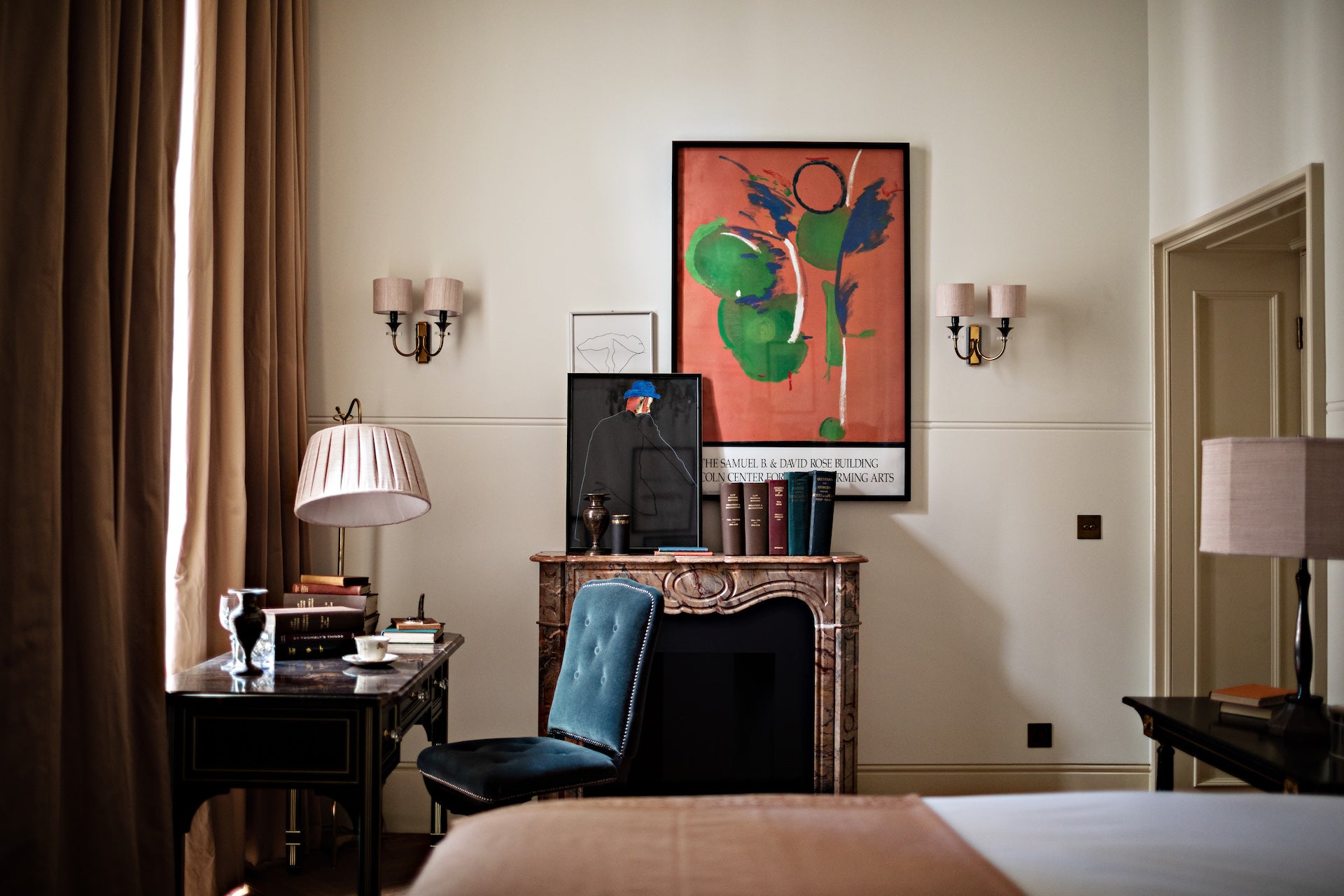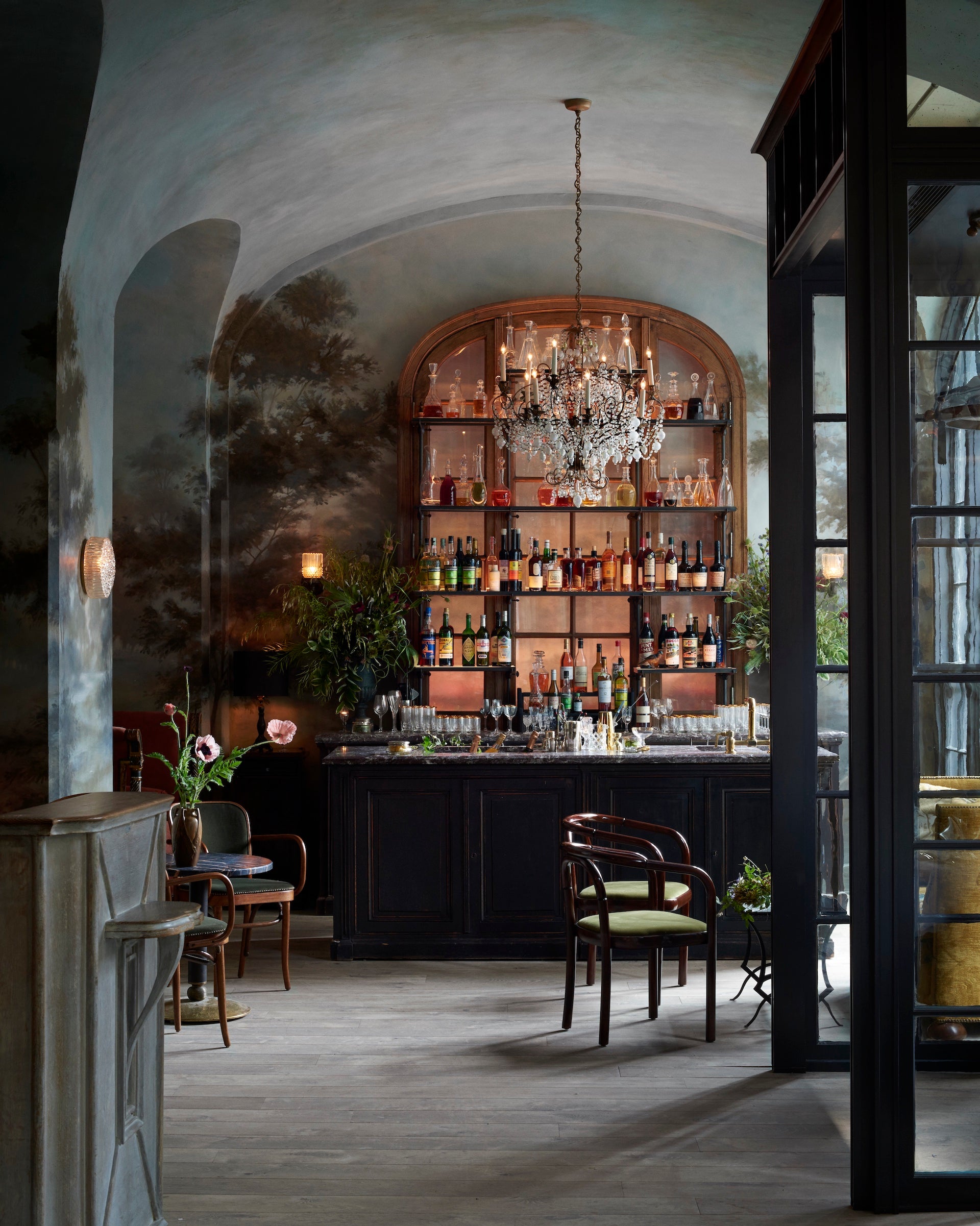Design Legends
Roman and Williams
Each week design doyenne Daniella Ohad talks with an industry-defining legend of interior design
Each week, Daniella Ohad hosts Interior Design: The Legends, a virtual program presented in partnership with Christie’s Education, comprising one-on-one interviews with the world’s most admired interior designers. For the Design Miami/ Forum, Ohad recaps the highlights from each conversation. This week her subject is Roman and Williams.

“Robin and Stephen are true masters of atmosphere. Their environments are completely transporting, enchanted universes in which every single luscious detail is thoughtfully conceived and executed. In fact, the RW Guild and La Mercerie restaurant (along with Le Coucou) are public examples of this talent. The spaces evoke a distinctly serene mood and the lucky visitor is captivated by their imagination. They achieved a similar alchemy in their renovation of the British Wing at the Metropolitan Museum, conjuring a cozy stroll through history in the formidable space. The Roman and Williams world is a beautiful one.” —Amy Astley, Architectural Digest Editor-in-Chief

Despite their enormous success and cult following, Robin Standefer and Stephen Alesch, co-founders of award-winning architecture brand Roman and Williams, have remained outsiders in the world of interiors. Perhaps it’s because these partners in both life and work create richly layered spaces that straddle the line between design and anti-design. We explored their signature approach during last week’s Interior Design: The Legends talk.
Like most masterful 21st-century interior designers, Standefer and Alesch employ intricate storytelling in all of their projects, whether for hospitality, entertainment, or residential contexts. As they reject shiny, polished aesthetics in favor of soulful expressions of heritage and patina, their stories are about personalized spaces that look like they’ve been there forever.

Standefer and Alesch’s affections for tradition is reflected in their brand, Roman and Williams, which was named after the duo’s grandfathers, and they attract high-profile, on-the-pulse, international clients who appreciate their bohemian yet intellectual environments rooted in the past. Think Ace Hotels, Viceroy New York, Veronika Restaurant at the Fotografiska Museum, NoMad London, The Standard Grill, Le Coucou, John Dory Oyster Bar, La Mercerie, and GOOP—all spaces that feel like romantic set designs for lush films like The Great Gatsby and La Dolce Vita. It is not only because Standefer and Alesch started their careers in the film industry but also because they aim to stimulate emotional connections.

Roman and Williams received massive media attention in 2020 when they completed the multiyear renovation of the Metropolitan Museum of Art’s British Galleries, which were known to be the least visited in America’s most visited museum. I had always loved that sleepy wing and regularly took students for lessons on 17th- and 18th-century interiors, knowing that we would be alone in the vacant galleries. With the exception of a handful of visitors passing through on their way to the American Wing, the British Galleries were nearly forgotten. Thanks to the Roman and Williams’ renovation, they are now among the most talked-about areas of the Met, attracting thousands of visitors.
With daring and innovative thinking, Standefer and Alesch brought the gloomy galleries to life, casting the amazing English treasures in a new light. Rather than the traditional scholarly presentation expected from the Met, they have introduced the notion of the experience. Less didactic but more intriguing; less monotonous and more inspiring; less old-fashioned and more relevant. The exhibition of the museum’s collection of historical teapots particularly captured critical acclaim. Set in a round, tower-like acrylic case offering a wonderful 360-degree view, the dozens of teapots are displayed according to typology rather than chronologically.

“Robin and Stephen are victims of object lust!” Luke Syson, former Iris and B. Gerald Cantor Chairman of European Sculpture and Decorative Arts at the Met, told me. “That’s why they know exactly how art should be best displayed and how things should combine in a room.” When I asked Standefer and Alesch about what is “American” in the new British Galleries, they said, “Americans are strong, confident, stubborn, and passionate.” And it is that independent spirit that has propelled them to dare to create a new museum language, one that departs from strict rules.
About their recently completed home for Gwyneth Paltrow in Montecito, California, Standefer and Alesch said the experience was “profound,” a prime example of the rewarding and long-lasting relationships that can develop between an architect and client. While they have been working with her on various projects for many years, this house reflects Paltrow’s journey into the world of wellness as well as the passion and focused taste that have become synonymous with her identity. The house is at once historical and contemporary, while its narrative is informed by her preference for the serene. The underground spa—a remarkable space clad with handmade tiles in shades of turquoise—summarizes the values that stand at the core of the house. Reminiscent of Roman baths, with a strong reference to the American Arts and Crafts Movement, it is a place of restorative beauty, where the craft intersects modern living.

Standefer and Alesch’s Montauk home is the center of their lives, their own peaceful retreat and ultimate creative laboratory. Looking at imagery of this house, one can fully grasp the notion of anti-design, which they have coined to describe their work. That provocative phrasing is meant to challenge the way design is often perceived as the art of artifice, superficial and ephemeral. A Roman and Williams interior, in contrast, is intended to be a profound statement, conceived as a gesamtkunstwerk, where architecture, design, and décor come together as one holistic, purposeful entity that supports an individualistic way of living, personal and intimate.
At the flagship store of the Roman and Williams Guild, Standefer and Alesch have gathered homewares, furniture, and accessories from international artists and makers whom they have discovered over the years, alongside their own original designs of furniture and lighting. In 2021, they opened a gallery space down the street to present exhibitions of artisans whom they have championed, with a focus on ceramics. Their most ambitious project to date and the hallmark of their career, the Guild has brought the duo to wider mass awareness. Situated in a historic building in SoHo, the store embodies their public persona, celebrating their vision of a home and their love for the handmade. Authoring and curating the brand according to their most treasured principles has made them feel “grown up,” in their words, as they feel a deep responsibility to safeguard what they have built.

When it comes to designing a restaurant, the narrative ought to communicate the chef’s vision and tell his or her story. At Le Coucou, they designed the space to fit renowned chef Daniel Rose. His French cuisine is contemporary and playful, so Standefer and Alesch sought to formulate an elegant downtown space. The task was to reinvent the allure of the French chateau, while the exposed kitchen—unexpected in an upscale French restaurant— evokes a fictional, massive loft in the French countryside where you watch the chef at work.
World-renowned French chef and restaurateur Jean-Georges Vongerichten told me, “It’s a magical experience to collaborate with the talented team of Robin and Stephen. I’m drawn to their craftsmanship and the way they can transform a large space into an intimate one and small spaces into grand ones. Their choices of materials and elements make their designs timeless, inviting, and warm.” Such an apt summary of the appeal that has made Roman and Williams design legends. ◆
You can attend live Interior Design: The Legends webinars by registering here.
